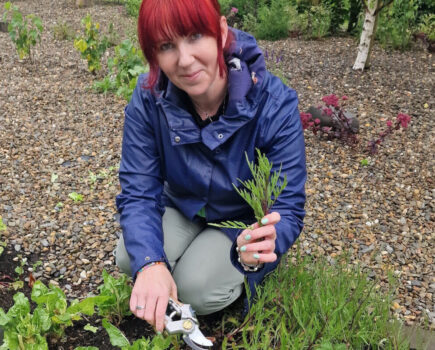Liz Zorab explains how to create sensational seasons of colour
In our previous home I created a shrubbery, thinking that it would be a good way to fill a space, using a type of living fence separating the area where we parked our cars from the garden. What I hadn’t bargained on was just how much it would provide year-round colour and interest, or that it needed very little work to keep it looking good. So when we moved to our new home three years ago, I was keen to recreate this look and to make sure that I included plenty of shrubs in other areas of the garden also.
I think shrubs often have an unfair reputation of growing too large or straggly, or conversely, for being difficult to grow. Yet careful selection of the right shrub, and the right variety, grown in the right spot, and they should flourish with ease and provide a great display of colour year after year.
Unless you need an instant impact, I suggest that you purchase young, smaller plants and allow them to grow on in your garden. This way is cheaper, and it allows the shrubs to settle into their new site quicker and grow rapidly. While you are waiting for them to fill the space, grow annuals around them to give quick results. I know that gardening teaches us patience, but sometimes we just want a little instant gratification!
Here are some of my favourite shrubs for August flowers.
Hydrangea paniculata Vanille Fraise ‘Renhy’
I first saw this shrub at RHS Garden Wisley and was captivated by its beauty. On the whole hydrangeas are relatively easy to please as long as their roots are not waterlogged or very dry soil. Hydrangea paniculata Vanille Fraise ‘Renhy’ offers large, conical flower heads that are creamy white flushed with pink.
They are happy in full sun or partial shade and are hardy throughout the UK, even during severe winters. Leave the flower heads on over winter to protect the stems. You need only cut back any dead stems in spring, but for a better flower display, cut all stems back to a pair of healthy buds on last year’s growth. This way you can create a framework from which the new season’s growth can build.
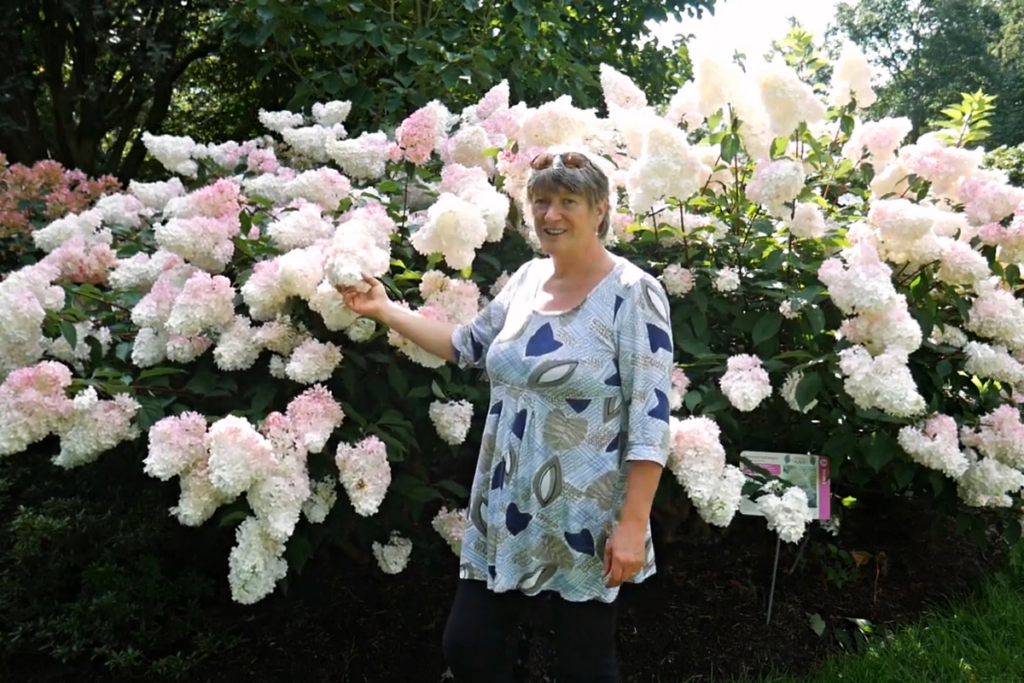
Hardy fuchsia ‘Genii’
Hardy fuchsias are one of the great ‘doers’ in the garden, each year putting on a good display of foliage and flowers. If you choose a variety with an interesting leaf colour, you get double the impact!
Fuchsia ‘Genii’ has golden leaves on contrasting maroon stems of the new growth, and rich maroon and purple flowers. After the leaves drop in autumn, the stems create a dense, tangled framework from which the new growth appears in spring. It is one of the hardiest Fuchsia, coping with all but the severest of winters. In our previous garden, it lived through ‘the beast from the East’ and -13 temperatures and then coped with the heatwave of 2018! Height and spread 90-100cm (35-39in), although I’ve seen them grow to more than 150cm (59in) spread.
Hardy fuchsias are easy to propagate from cuttings, and I take a few each year to increase the number of plants in the garden and to give to friends. Cuttings need little more than placing in a jar of water on a windowsill or pushing into a pot of compost and left in a sheltered spot.
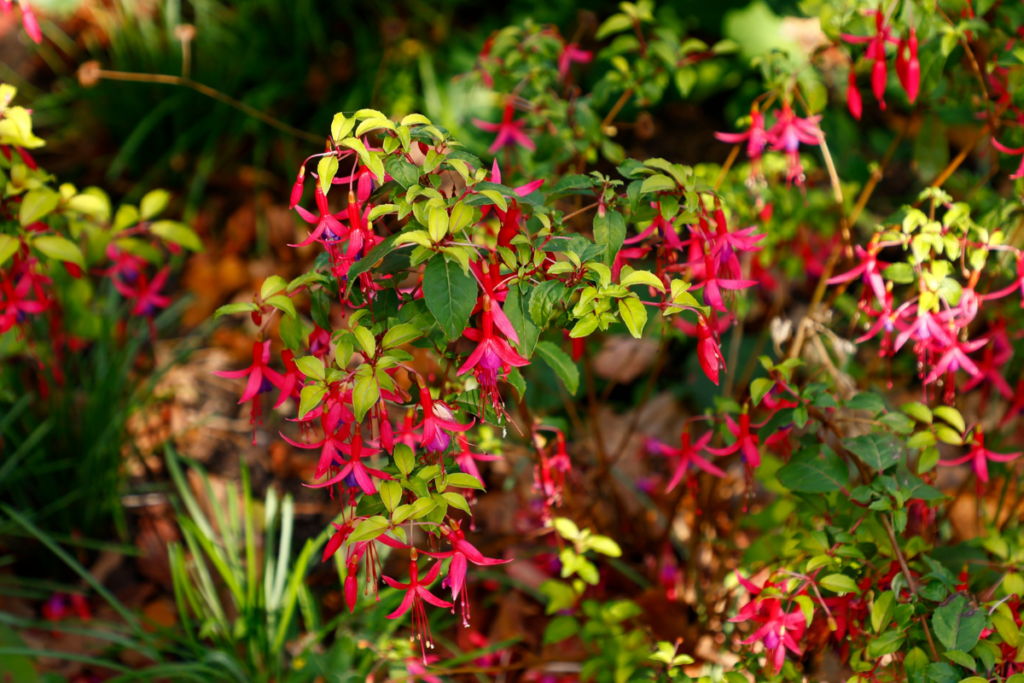
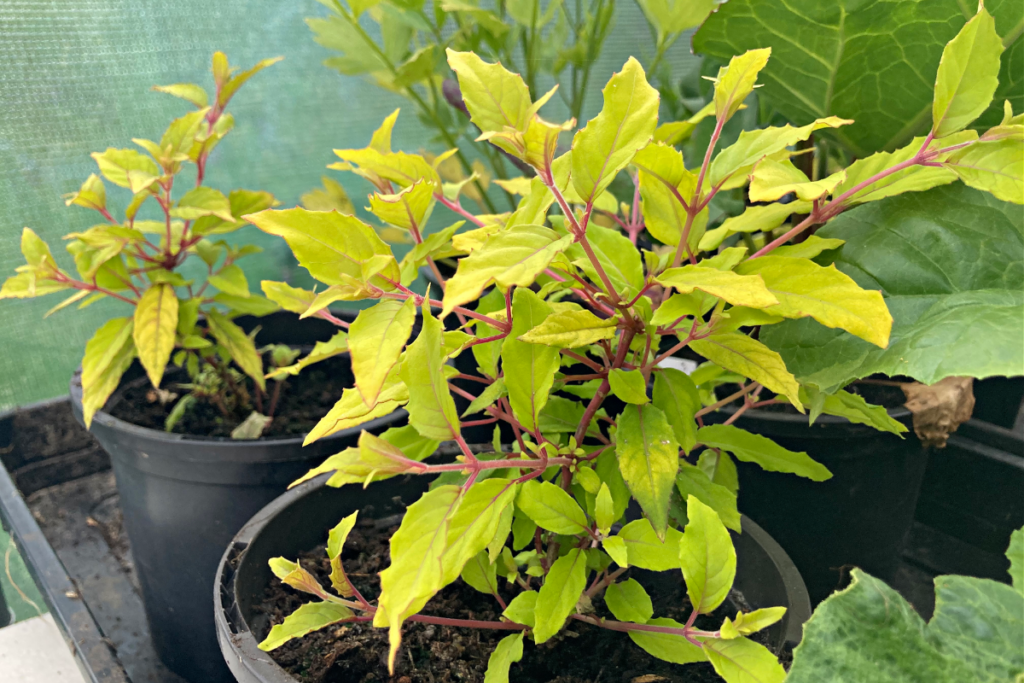
Rosa ‘White Pet’
Listed as either ‘White Pet’ or ‘Little White Pet’, this dwarf repeat-flowering rose caught my eye earlier in the year on the Bridgerton Garden at RHS Chelsea Flower Show, and I now have one of my own. This variety has been around for over 140 years and has won an Award of Garden Merit. It grows to 60cm (2ft) height and spread, making it ideal for the front of the border or in containers.
Rose ‘White Pet’ is a sport of the rambler ‘Felicite et Perpetue’ and has pink flushed buds that open to white, scented flowers. It is tolerant of poorer soils and will grow in full sun and partial shade.
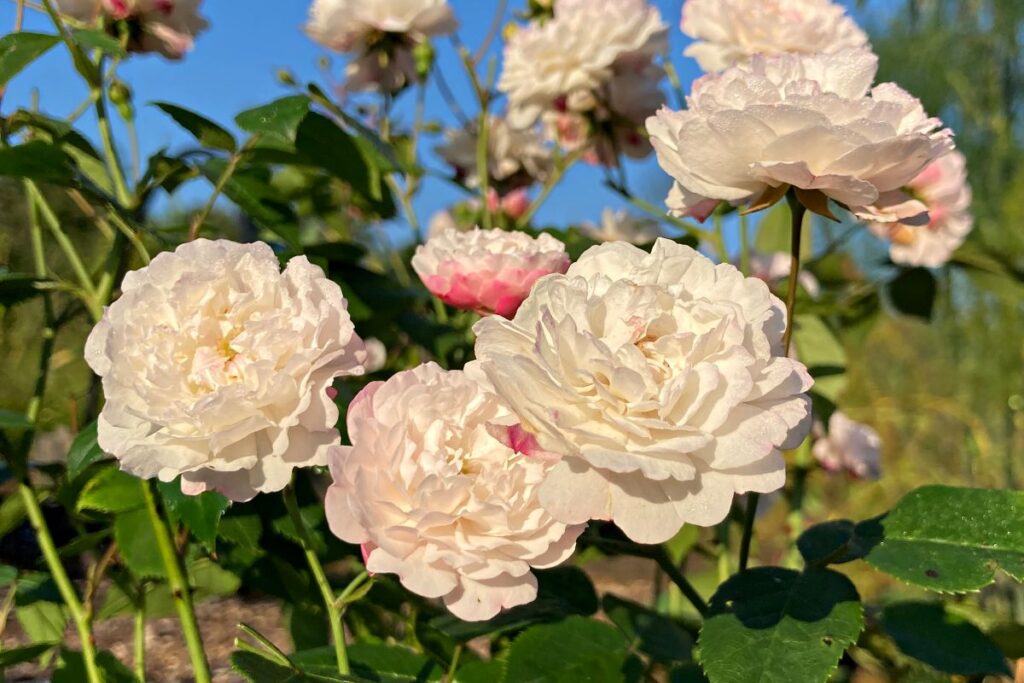
Buddleia
Buddleias have the reputation of becoming large and unruly shrubs, and this does happen if they are left to grow without pruning. A hard cut back each spring is all that’s needed.They are known for attracting bees, pollinating insects and in particular, butterflies to the garden, hence their common name of the Butterfly Bush. Regular deadheading will result in continued flower production.
Buddleia davidii self-seeds freely and can become a nuisance and invasive. However, in recent years, smaller-growing varieties have been bred that are seedless or sterile, and can be grown in pots on a patio or in the front to middle of a border. Try one of the Butterfly Candy Little series, which range in colour from white, through pinks to mauve and purple. They produce flowers on a short plant, which reaches 50-80cm height and spread.
Hibiscus syriacus ‘Oiseau Blue’
This is not the shrub for you if you have acid soil, but for gardens with neutral or alkaline loam, hibiscus can grow to be covered with large, trumpet-shaped flowers that have violet-blue petals with a maroon centre. It is not the fastest growing of shrubs, but can reach 150-250cm (59-98in) height and spread in 10-20 years.
I grew one that was unhappy in the spot I had chosen and the leaves became pale and it looked decidedly sorry for itself. Once moved, to a better spot, it didn’t take too long for the leaves to return to the dark green that they should be and the next year, for the plant to start produce its delightful flowers.
Mahonia nitens ‘Cabaret’
I’ve always thought of Mahonia as a cold weather flowering shrub, so I was delighted when I learnt about Mahonia nitens ‘Cabaret’, which starts flowering in late summer. An evergreen shrub with spiky, glossy leaves and an upright and compact habit. It will grow well enough in most soils, except heavily water-logged soil and reaches 100-150cm (39-59in) height and 50-100cm (19-39in) spread.
The flower buds are orange and red and then open to a yellow flower. It continues to provide interest during late autumn and winter with blue-grey berries, which are ornamental and not for human consumption. Mahonia will propagate from cuttings. Use a mallet cutting to get the best results.
Ceanothus
Depending on the variety, Ceanothus shrubs flower from spring to summer or late summer to autumn and can be evergreen or deciduous. Whichever variety you choose, they provide a good display of blue to violet flowers in tightly packed flower heads that continue to produce over several weeks. Plant in soil that does not become waterlogged, preferably in a sheltered position. Propagate by cuttings – softwood cuttings for deciduous varieties and semi-ripe cuttings for evergreen varieties.
Crinodendron hookerianum
The Lantern Tree is named after the shape of the flowers which hang in bunches from the branches between May and August. It is frost hardy, but may need protection in colder areas. Try growing in a large pot and move into a greenhouse before the heavier frosts arrive in the late autumn.
Crinodendron hookerianum is a large shrub or small tree and can reach a height and spread of 5m (16ft). It prefers acid soil that is humus-rich making it moist, but well-draining. This flowering shrub is ideal in a woodland garden or growing in a shady spot.
……………………….
Thrifty tip – Use grass clippings as a mulch on your borders to prevent evaporation and conserve moisture in the soil. Place up to 5cm (2in) of grass clippings around your plants, avoiding contact with stems of plants to prevent damage and rotting. Avoid using grass clippings that contain seed heads to prevent grass growing in your borders or beds. Do not use grass clippings if the lawn has been treated with a weed killer during the previous three weeks. Over time, the grass clippings will break down, adding nutrients to the soil.
Find more tips, advice and articles like this at the Amateur Gardening website. Subscribe to Amateur Gardening magazine now




